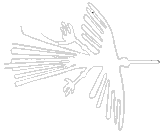 | SOUTH
AMERICAN PICTURES | ||
MAPUCHE
- south Chile
| |||||||
MAPUCHE
- south Chile | |||||||
| The Mapuche are a distinct ethnic group of about 400,000 living mostly in Chile with a smaller population in Argentina. As many as 1,250,000 people spread between both countries can claim Mapuche ancestry and many live in the urban areas. The Mapuche have their own language Mapudungan, a distinct religion and socio- political organisation. They are unique among all the ethnic groups of South America as they were never defeated by the Inca or Spanish invaders. Only the military might of successive governments has managed to subdue their warrior spirit. For many of these pictures we thank Mapuche families in Temuco, Padre Las Casas and Llanquihue. |
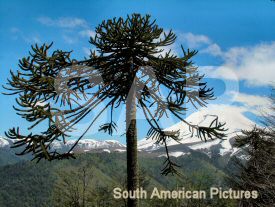 |
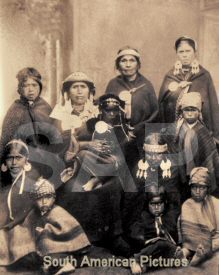 |
| Chilean pine (Araucaria araucana) and Volcan Lonquimay (2890m) in the Reserva Malal Cahuello, Región de la Araucania , southern Chile. | Late nineteenth century family group photograph of a Mapuche grandmother with her children and grandchildren. |
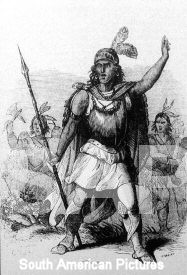 |
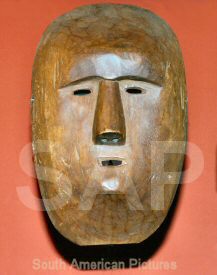 |
| Toqui Lautaro, the Mapuche warrior leader who defeated the Spaniards in the battle of Mariquenu in 1554. | Wood mask used in Mapuche ceremony of Nguillatun. The masks are often representations of friends or enemies. |
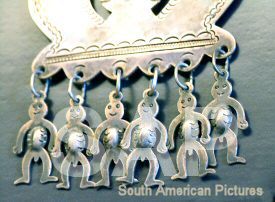 |
 |
| Small figures on a Mapuche silver pectoral pendant worn by women as part of their traditional dress. | Mapuche weaving on loom. (From the Museo Regional de la Araucania, Temuco). |
 |
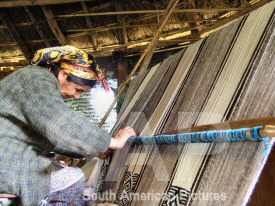 |
| Mapuche mother and children outside their thatch and wood ruca home. The girl wears traditional dress with a silver pectoral pendant. | Weaving is done by the Mapuche women on looms in their rucas. They still use mostly natural mineral and vegetable dyes. |
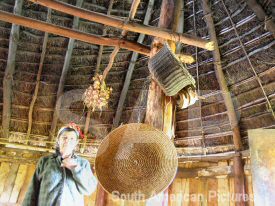 |
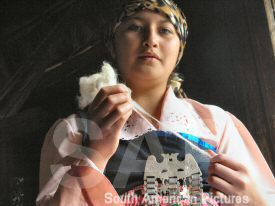 |
| Interior of traditional Mapuche ruca home. Items of basketware hang from the roof. | Mapuche girl spinning sheep's wool. She is wearing traditional dress and a silver pectoral pendant. |
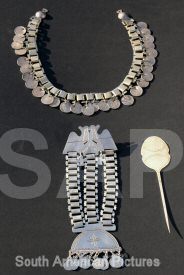 |
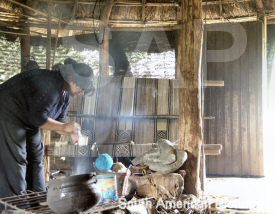 |
| Traditional Mapuche silver: a headband - trarilonko, a pectoral pendant - prenteor or trapelacucha, and clothes pin - tupu or topu | Mapuche woman prepares maté tea on the fire in the family ruca home. A loom with weaving is in the background. |
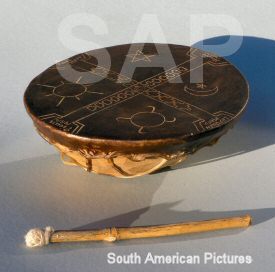 |
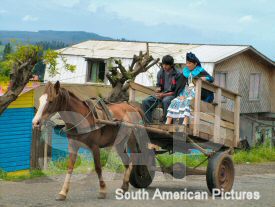 |
| A Mapuche drum or kultrun, made of laurel or canelo wood, and cow or goat skin. The canelo or Winter's Bark Drimys Winteri is the Mapuche sacred tree. | Horse drawn carts are widely used in Mapuche communities for transport. |
| | |||
All
the pictures are copyright © | |||
For
information about any of the photos in the archive or to request a larger selection
or for any use please send an e-mail to | |||
| | |||
|